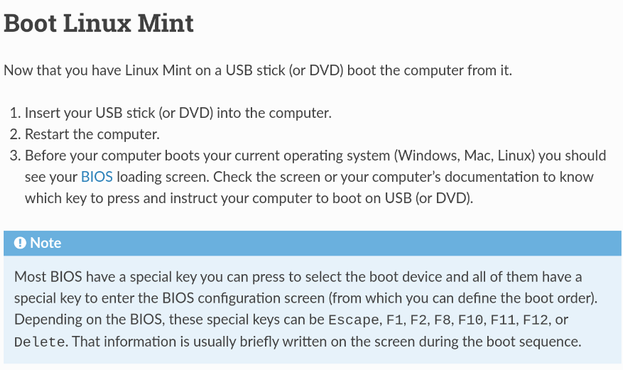@wolfyvegan @winkly The best use of Inga species:
On Kabi Kabi Land.
"However, I continue to try and I continue, indefatigably, to reach out. There’s no way I can single-handedly save the world or, perhaps, even make a perceptible difference - but how ashamed I would be to let a day pass without making one more effort." - Isaac Asimov
Can the Cane Toad be pictured scurrying around the bottom?
Hiya mate. Thanks for all your sharing of links. I'm not a stranger in the reading department.
This is what happens when we talk about the "release of land" for development. Local extinction of an Australian icon.
@perkinsy Depending on where it's mined, any landscaping yard will have crusher dust which more than likely is crushed basalt. I've been putting the same bag (now in old terracotta pots) into the worm farm for nearly a decade now.
*This product is a fine crushed rock and graded from 5mm down to dust. The blue metal crusher dust is what is left over at quarries when they are crushing blue metal rock commonly known as volcanic basalt. Crusher dust contains 80% dust and 20% fine grit that goes up to 4mm in size.*
It's obviously not as high quality as a rock dust from a gardening store but the 80% is good enough and a fraction of the cost. $30 for a 1/4m from a random landscaping yard in Melbourne.
Have you never used a chainsaw on a large tree?
It's the inflated sense of self-esteem.
@bencourtice Separate instructions to the above?
With the way malware infests a lot of downloads these days, verifying something as important as an operating system is probably best practice (but a step I've skipped plenty of times).
Best of luck. Have fun getting your head around flatpaks and why you should use them!
@bencourtice Things you probably did when your brain was younger and more flexible.
If I can get my partner and kids onto Mint without too many hassles, you'll get there. Cinnamon (what Mint uses) is easy mode for a Windows user but some things will not be the same and I guess users balk a little. Picking software alternatives for your usual tasks will be the hardest.
These instructions aren't that out there (for other readers hesitant to give it a go):
@bencourtice You took the time to learn Windows in the past. Or did it help that you bought the device with Windows already installed?
@douglasvb Depends on the app if you want to use anonymous viewing. I looked at the webapp and it appears Voyager doesn't have it (but don't quote me).
Thunder (the app I have open in front of me) allows adding of Anonymous Instances
@tj It was 10 year viability when I started but now the factsheet is saying 15. It gets worse.
Everyone has a obligation to manage it. Best to learn your foe. Bag it (general waste), drown it (water), or fire, and/or chemical but I wouldn't if you are growing food.
Knowing what I know, if I had to buy or manage a property with Madeira, Cat's Claw, or Ipomoea, I would walk away from the deal. All credit to the people that knowingly give it a go.
Buy yourself a hori-hori/soil knife, it helps with the weeding.
@tj The worst weed in SE QLD most likely, particularly due to its impact in riparian systems. Will grow (on average) a metre per week in good conditions; all of the plant is viable, the aerial bulbils are good for years, the subterranean tubers are good for near a decade. It's definitely worse than Chinese Elm, Madeira would bring down a Celtis forest eventually.
I would recommend a full removal there because it will cover your entire garden/fenceline and then persist from the bulbils. Very carefully unwind all of it and put it into a bag, dig up any tuberlings also very carefully (the bulbil looks like dirt or a rock and snaps the stem easy). Never stop managing it. Talk to your neighbour too. If it's there, it's probably coming from somewhere else. Look around some.
I specialised in Anredera (Madeira) and Dolichandra (Cat's Claw) for many years. If you have any questions, just ask.
@tj Madeira Vine on the right there? I'm so sorry.
@Moosader Looks at Homepage link.
I get it now.
@MPaola I posted a general link from Wikipedia and I've been bombarded with thought crime accusations and replies. Try not to read into a single link so much.
As I stated "I'm an arborist" so basic-level horticulture I can understand. The book I suggested is the deeper "why" pollard is/should/could be an accepted practice.
This is going nowhere. Again, I'm sorry.
@MPaola I'm sorry. I was posting sources and further information for all readers. If you're not interested, that's fine. Sorry for replying to your post.
@MPaola *it = just chopping a plant to the ground or the head off a tree whenever and wherever it is convenient without giving it another thought.*
As a "botanically trained agroecological horticulturist", this quote above indicates you have little understanding of the practice of pollarding and probably don't want to know because it doesn't fit within what you deem "correct". I am a trained arborist and think that it's fine as a management technique and I'm from a country that rarely to never uses it.
Would a book help change your mind? https://www.williambryantlogan.com/
@anne_twain @MPaola How dare we disparage #pollard
I used to be an arborist and am still involved in trees (just in a different capacity).
@Slatlun has got it all right, though I would just add that the recommendation used to be 1/3rd (33%) of canopy but keep in mind that less is better so often a MAXIMUM pruning amount is 25%-33%. But, pollard and coppice exist which is a 100% pruning technique so there are exceptions to every rule.
That said, no tree would theoretically "like" to be pruned so if you can get away with <5% then that's the best option. Depends on what you are going for. The "just a bit more" feeling is constant when pruning, particularly when using a chainsaw, so that's something that needs to be mentally fought. Small and steady, observe, make longterm decisions on what's going to happen years down the track.
Gorgritch has made the correct observation that often pruning is associated with tree health, including tree health in relation to growing seasons. And to add to that, if you are pruning deciduous trees, you always prune the theoretical day before bud burst (which translates to some period later in Winter by a couple of weeks but every year is different).
There is even a correct way to use the secateurs that most don't know about. The sharp part of the blade (not the blunt bypass or anvil part), has to be on the inside of the cut, leaving a smoother non-bruised edge on the plant part you are keeping. This means when pruning a tree, the secateurs will be constantly being turned around in your hands before you make the next cut (if required). Someone learning pruning might not notice an arborist flipping the seccies before they make the next cut because usually the arborist is operating a few cuts ahead in their mind.
To answer your question regarding trunk strength, there are a lot of factors. Was the tree tied up after planting? Was it over-fertilised (even the supplied fertiliser in original pot can have an effect) or is it a species growing in a slightly different soil type or did it have excessive rain? Genetically, did you get unlucky or is this how it wants to grow (can you compare to other trees of the same species in a similar location)? So many questions to ask. Removing lower branches often decreases trunk taper making it more likely to bend and blow around so I would consider what you heard there maybe unlikely to help but you never know.
The easiest way is to perform a height reduction on the tree. This will set the tree's height back, give it more time to increase trunk diameter while reducing the weight and sail effect from wind. The trunk may stiffen up while the tree replaces that height again. Reductions are a common though more advanced pruning technique. It's hard one to explain but you are selecting for a new leader that you can imagine will become the head of the tree years later. But, the branch you cut back to has to be the right size in relation to the trunk that is cut... blah blah blah. Have a look at a few guides for reductions online.


